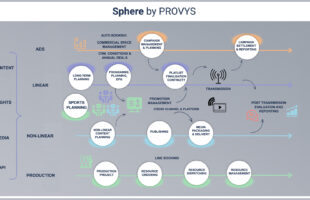Unsurprisingly, Internet usage is on the rise among Asia’s seven to 14 year olds, and even higher amongst the 15-19 age-bracket. While TV-watching still dominates, with Internet a strong second, the gap between the two narrows from 17 percent (7-10 year olds) to 11 percent (15-19 year olds). Across Asia-Pacific, 59 percent of the region’s children spend over an hour each time they go online and 15 percent is the regional average for virtual socialising. Happily, while virtual friendships are thriving, children still seem to prefer the real thing, and 37 percent of kids surveyed have their own mobile phone. According to the study, Asia Pacific kids’ use of the Internet is predominantly from home, with 84 percent saying they ‘usually’ use the Internet from home, versus 16 percent in school and 12 percent for friends/relatives homes or cybercafés. Desktop computers still dominate with 67 percent accessing the Internet via a desktop PC, while over a third cite laptop use. A minority of Internet-using kids goes online via a mobile phone or smart phone, but, notably, it’s already more than one in 10. Among Internet using kids, nearly half are daily users and 75 percent go online at least twice a week. “Kids have an inherent ability to assimilate new technology and adapt to change at a phenomenal rate, which can be seen in how they have embraced computers and the Internet,” said Duncan Morris, vice president, research and market development, Turner Entertainment Networks Asia, Inc. “Where once it was all about watching TV, today kids can comfortably view, use, consume, play and engage with our characters and stories anywhere, anytime and anyplace.” Television remains the number one form of media that kids consume, with 61 percent of the regional sample claiming to have watched TV ‘yesterday’. Among Internet-using kids, the Internet is a strong second to TV viewing with just under half accessing the Internet ‘yesterday’. Not surprisingly, TV viewing levels are higher among kids with less widespread Internet access, for example in the Philippines and India, where 95 percent and 92 percent respectively watched TV ‘yesterday’. Coming in a distant third was playing console games, with 26 percent gaming via the TV during the same period. For more than 10 years, Turner Entertainment has been taking the pulse of kids living ina range of Asia Pacific countries via Cartoon Network’s New Generations surveys. This year the New Generations study was conducted through five country-specific surveys, supplemented by a regional online survey of kids visiting Cartoon Network websites. There were over 10,000 respondents representing kids aged 7-14, allowing the build up of a comprehensive picture of Asia-Pacific kids’ lifestyles, preferences and opinions in 2009. Gaming proved the biggest online attraction for kids, with two-thirds playing online games within the past month. Online video came in second place, with 47 percent of kids watching some form of video online. YouTube is the video site of choice for kids, with 34 percent claiming to have watched videos on this platform in the past month. The same proportion claims to have watched episodes of TV shows or movies online. Email is the third-most prevalent online activity for kids (34 percent), followed by schoolwork/homework (32 percent) and downloading music (20 percent). Finally, a relative minority of kids are into social networking (15 percent), blogging (10 percent) and micro-blogging (five percent). But the more things change within the virtual space, the more they stay the same away from it. When given the choice between the two options, kids’ preferences haven’t changed much from previous generations: • 50 percent prefer watching TV versus 40 percent who prefer using the Internet • 62 percent prefer real-life friends versus 21 percent who prefer Internet friends • 45 percent prefer eating versus 25 percent choosing to sleep • 61 percent prefer traditional talking versus 20 percent who prefer texting When it comes to allowance, the giving of pocket money is not as widespread as kids would like, and doesn’t appear to be linked with the level of economic development in one country versus another. A fortunate 94 percent of kids in the Philippines receive pocket money compared to just 49 percent in Japan and 41 percent in India. The average amount of pocket money received has changed for better or worse depending on where kids live. In India, allowances didn’t suffer from the economic downturn as kids received 34 percent more than in 2008. Filipino kids also benefited to the tune of a 12 percent increase. By contrast, kids in Japan and Taiwan suffered along with the rest of the economy, as their pocket money fell 22 percent and 14 percent year-on-year respectively. In addition, concerns for kids in Asia Pacific are not much different from what’s on everyone’s minds globally. Asked what is the most important world issue, ‘the spread of the H1N1 flu virus’ was chosen by the largest percentage of kids (23 percent), followed by ‘environmental issues’ at 15 percent and ‘terrorism’ at 14 percent.
Ad – Before Content
Related Articles
- PROVYS Technologies Reports an Active and Successful 2024
Screenshot
ZEE5 Global announces the World Digital Premiere of The Sabarmati Report
CBC announces Ioanna Roumeliotis as new host o THE FIFTH ESTATE
- Season Two of HBO Original drama series The Last of Us debuts in April
Courtesy of HBO
Blue Ant Media launches free streaming channel, Declassified, on VIZIO WatchFree+
- Maxon welcomes Laubwerk to their expanding family of innovative tools
Assets by Laubwerk / Scene by Imminent Studio








